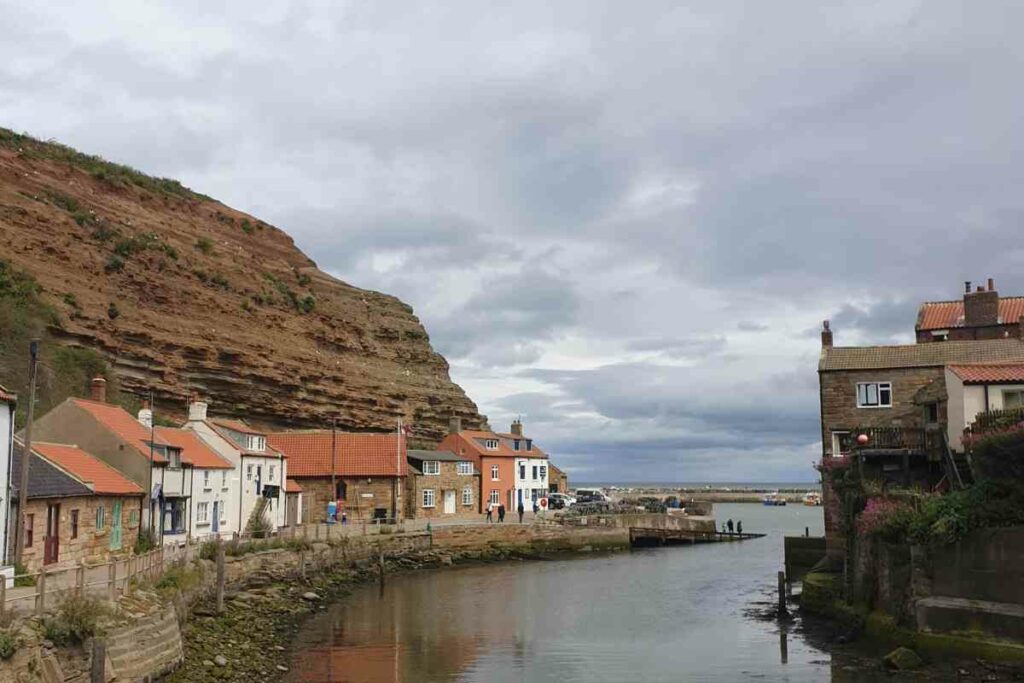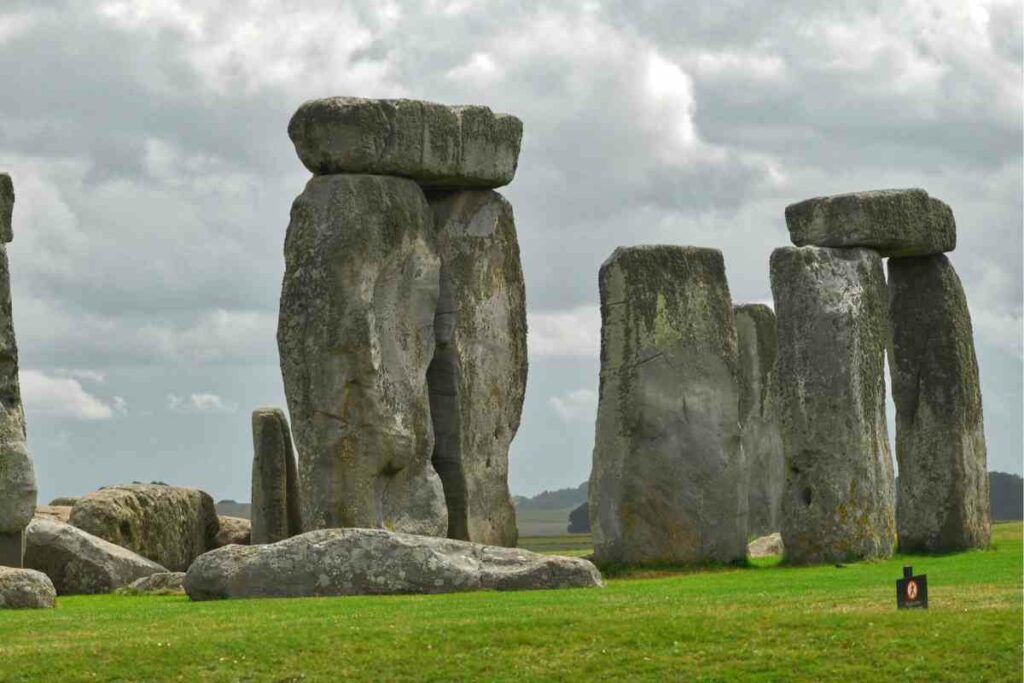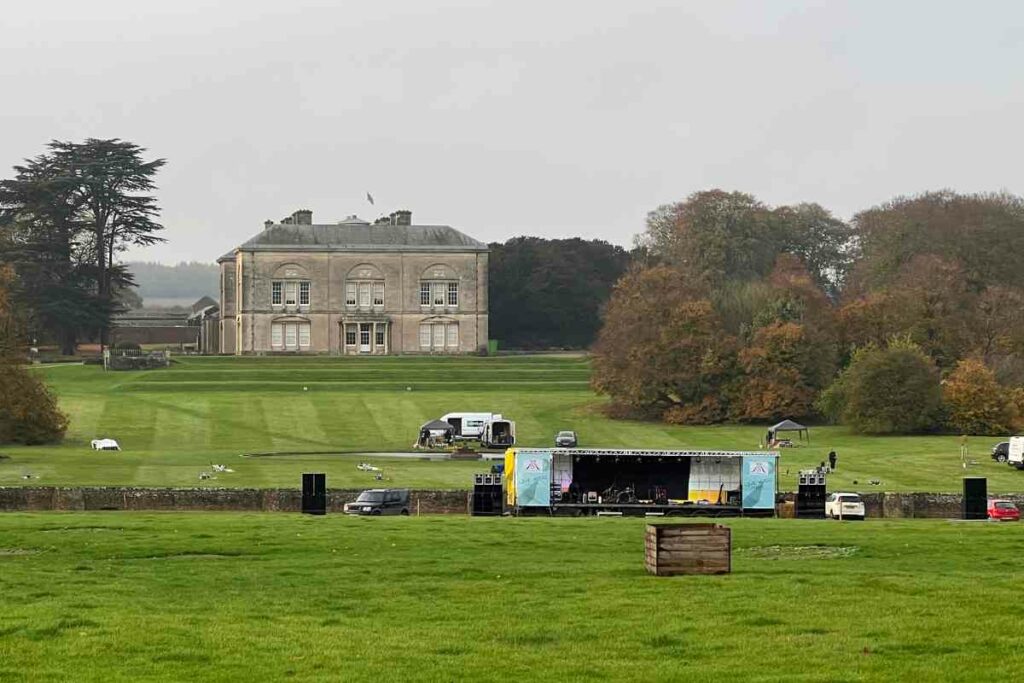Whitby has something for everyone: young, old, goths, horror fanatics, foodies, historians, jewelry buffs, sailors… the list goes on!
Location
Set on the North Yorkshire Coast, Whitby is a seaside town and port that is at the mouth of the River Esk.
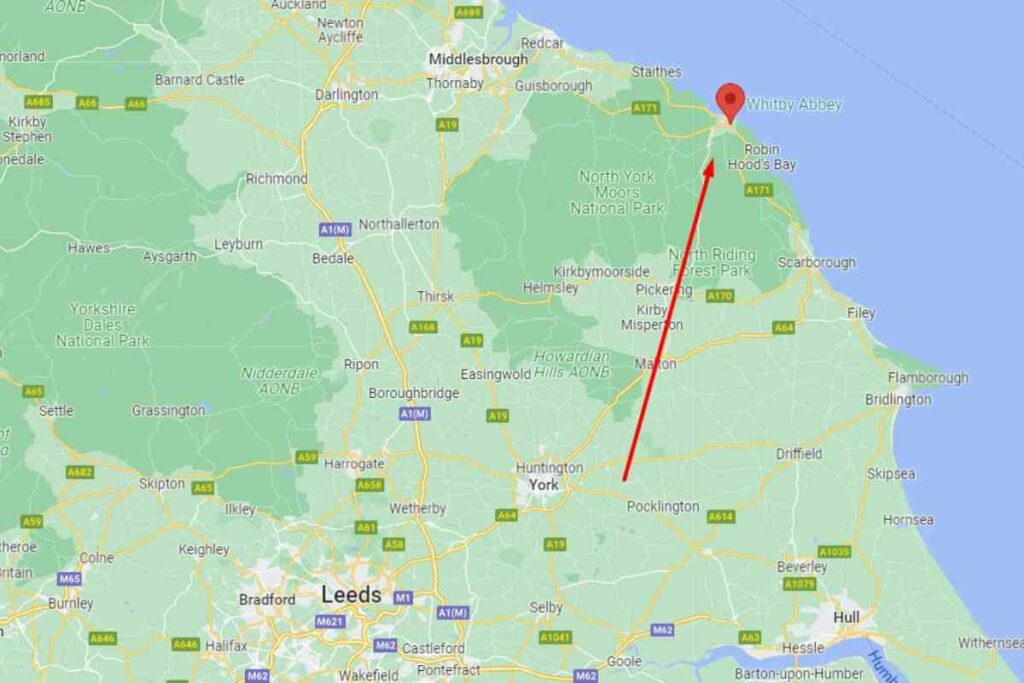
It sits 22 miles from the larger town of Middlesbrough to the North and 47 miles from the historic city of York.
History
Whitby dates back to at least the 7th century and was called Straenæshalc (or other, similar-sounding versions):
- By the 11th century, it was referred to as Prestebi, from the Old Norse for “village of the priests.”
- In the 12th century, the origins of its current name came about and it was recorded as Hwitebi and Witebi, stemming from the Old Norse of hvítr meaning ‘white’ and býr, meaning ‘village.’
- The 13th and 14th centuries saw it evolve to Whitebi and Qwiteby respectively.
- In AD 657, a Christian monastery was founded in Whitby. It was as a thanksgiving after defending Penda who was the pagan king of Mercia.
When it was founded, it served as a ‘double monastery,’ housing both men and women.
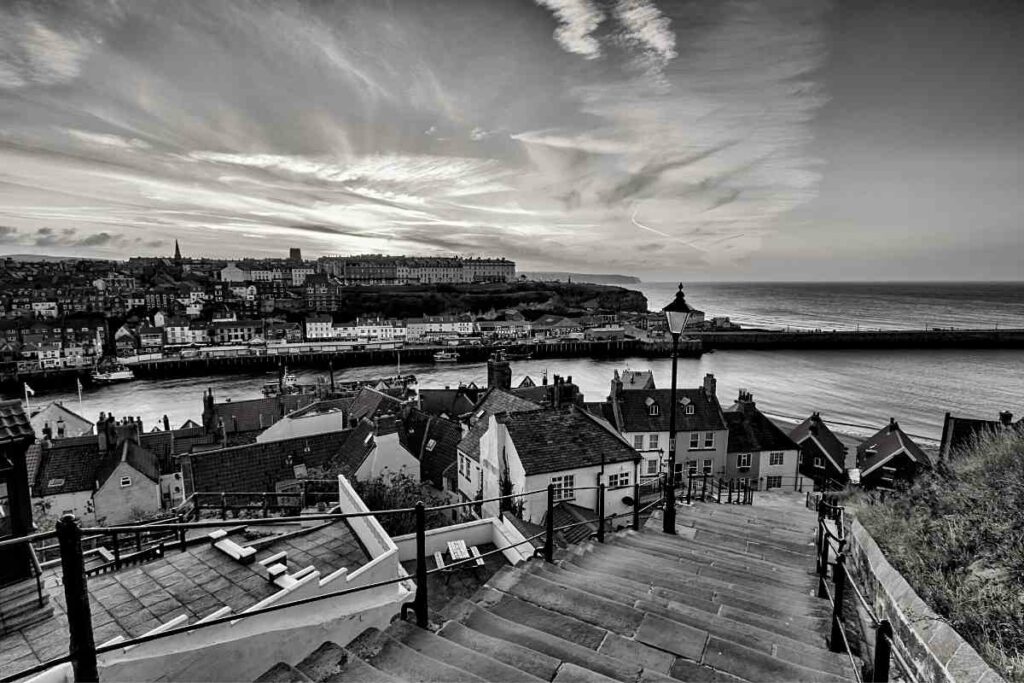
The monastery later became a Benedictine abbey. The monastery was home to Cædmon, the Northumbrian poet thought to be the first in England.
The monastery thrived for many centuries until Henry VIII came along and destroyed it in 1540 as a part of his Dissolution of the Monasteries.
Back then, the settlement of Whitby only had between 20 and 30 houses and a population of around 200 people.
Industrial Heritage
Eventually, Whitby became a home of alum mining.
It also became a well-established port, importing coal from Durham to be processed in the area.
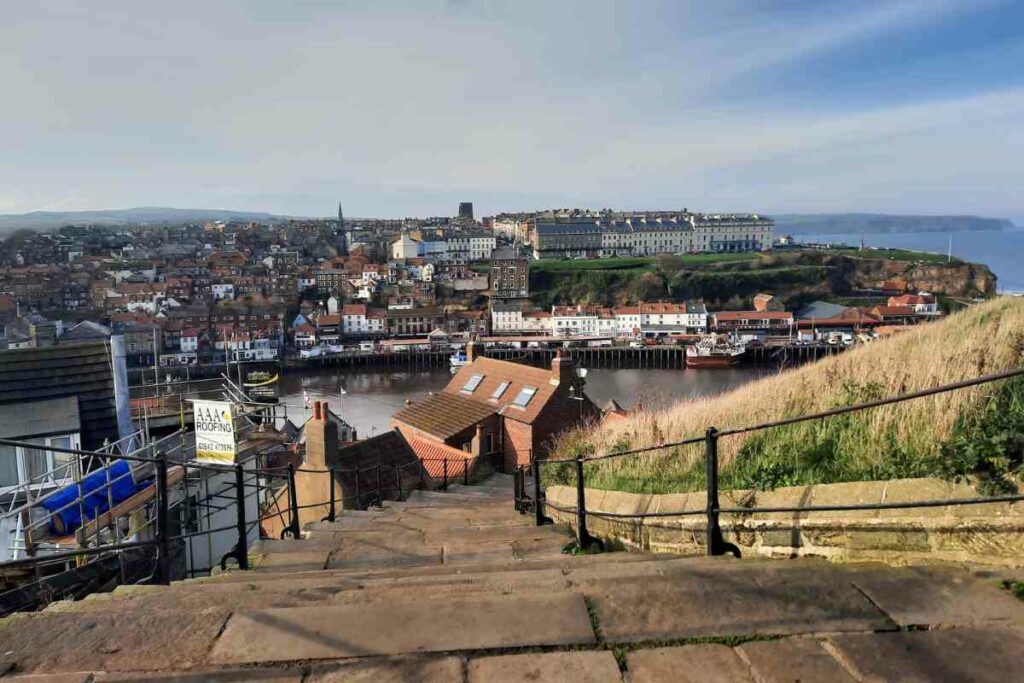
Due to its increase in size thanks to the mining industry, Whitby also extended its talents to shipbuilding.
Once upon a time, between 1790 and 1791, Whitby was the third biggest shipbuilding location after London and Newcastle!
By 1795, Whitby also became a large whaling port.
Jet Mining
Aside from alum mining, Whitby became a hub for jet mining.
The jet found at Whitby is over 180 million years old and most geologists agree that it comes from the fossilized wood of the Araucaria tree, a tree whose descendants include the Chilean Pine or Monkey Puzzle tree.

Formed in the Jurassic period, waterlogged araucaria trees sunk into thick mud on the seabed.
The mud formed a seal which prevented the wood from decomposing naturally and aerobically. Instead, it fossilized into jet.
In the Victoria Era – Jet was mined both on the coast and inland. Today, all the jet mines are closed, and today’s jet is found through coastal erosion.
Maritime Heritage
James Cook also learned the shipbuilding trade in Whitby.
He worked on colliers that shipped coal from the port.
In 1764, HMS Endeavour, Captain Cook’s famous ship that took him on his voyage of discovery to Australia and New Zealand, was built.
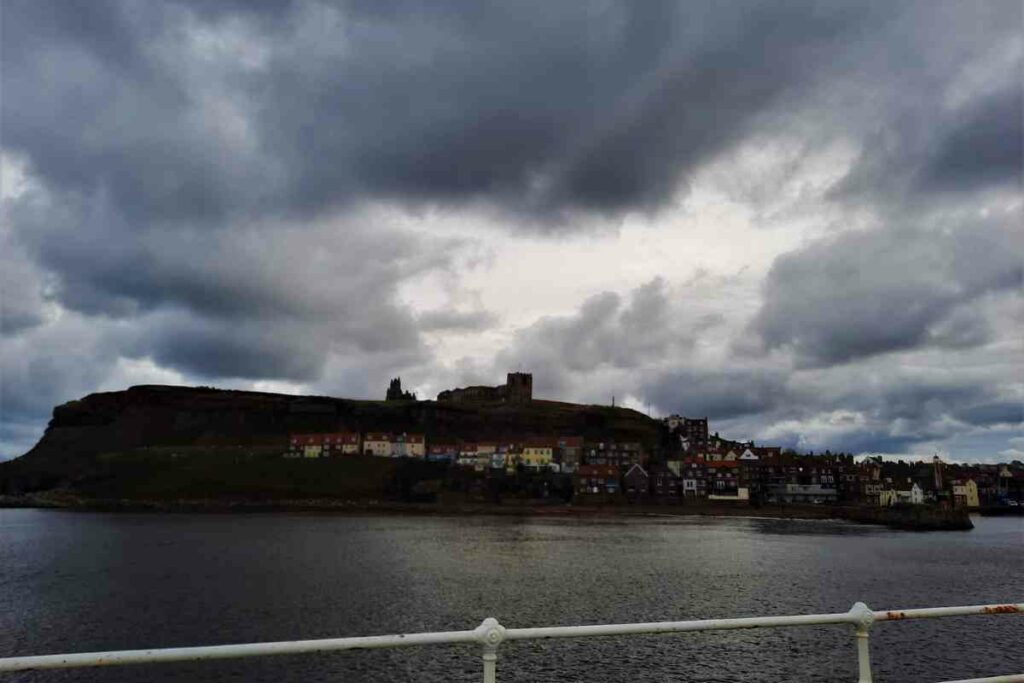
By the mid-1800s, the railways arrived, allowing Whitby to expand further in size.
It became a tourist hotspot and continues to be to this day.
Bram Stoker’s Dracula
It would be remiss to talk about the history of Whitby without mentioning Bram Stoker.
The Irish author is best known for his gothic novel Dracula.
Stoker visited Whitby in 1890 and it is this visit that is said to have inspired his great work.
Whitby Things to See and Do
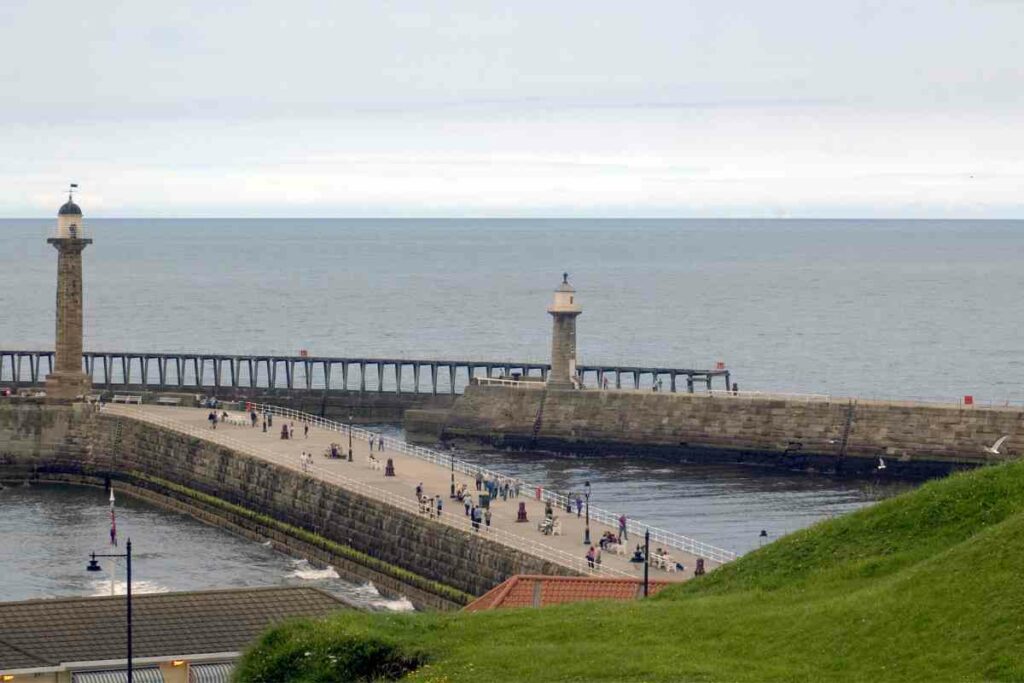
There are many things in Whitby that any visitor must see.
From ships and steps to seaside treats, a visit to Whitby should encompass them all.
The Endeavour
Given Whitby’s rich history with Captain James Cook and his famous voyage to Australia on board the HMS Endeavour, it is no surprise that a replica of the celebrated ship sits inside Whitby harbor.
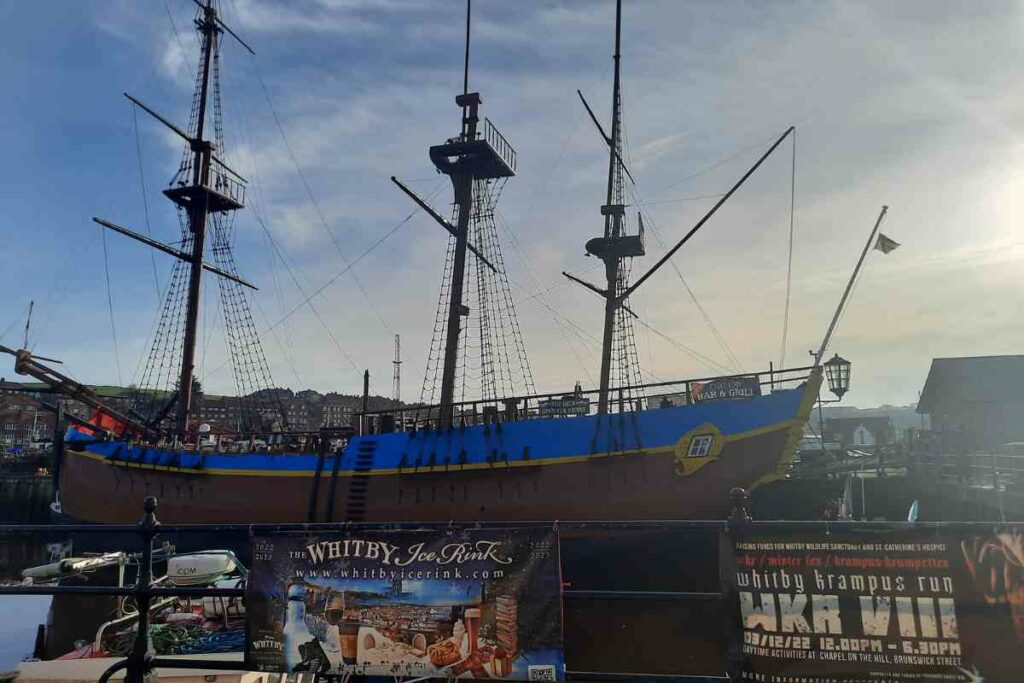
Walk along the gangplank and explore what the Endeavour Experience has to offer or dine aboard in the Orlop Bar and Grill.
Whitby Swing Bridge
If you’ve walked past the Endeavour, you may wonder how it passed the small, low bridge across the harbor.
Well, if you keep an eye out, you may just see this famous bridge swing right open!
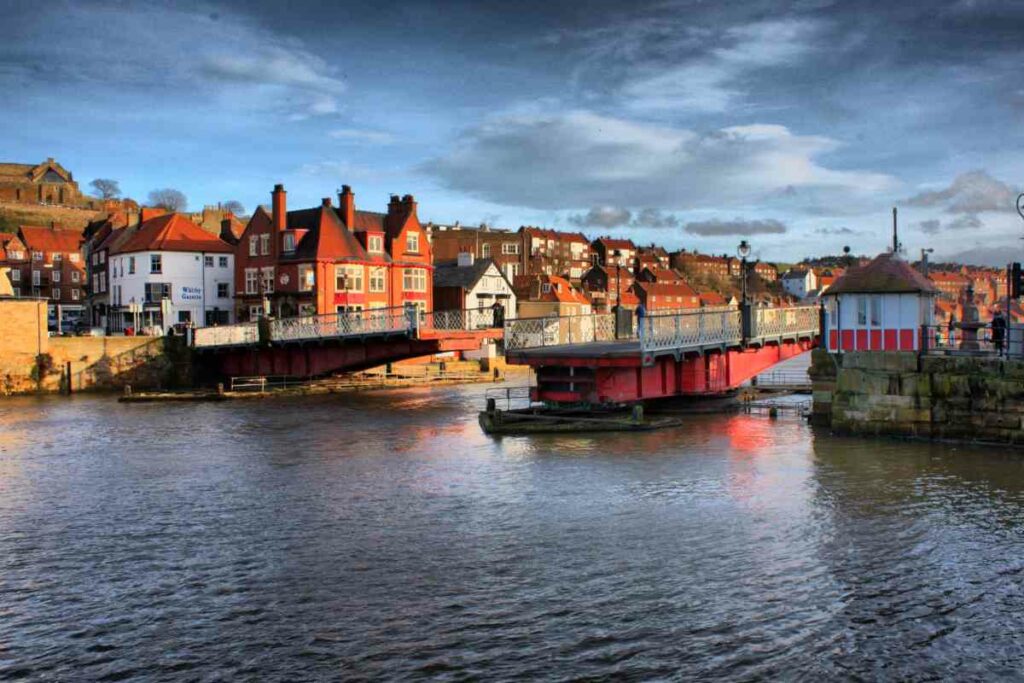
The bridge is for both pedestrians and vehicles but is narrow enough that vehicles cannot pass. As such, it’s controlled by traffic lights.
The bridge takes between five and ten minutes to open or close fully, including the time it takes to stop the traffic and pedestrians.
The bridge opens on the hour and each half hour on request from boats and ships.
199 Steps
A visit to Whitby shouldn’t be without a walk up (and back down) the 199 steps.
The steps, also sometimes called Jacob’s Ladder or The Church Stairs, are actually a Grade I listed structure.
The steps lead from the Old Town up to St. Mary’s Church and Whitby Abbey.
The steps have been there since at least 1370 and were made of wood until the 1770s.
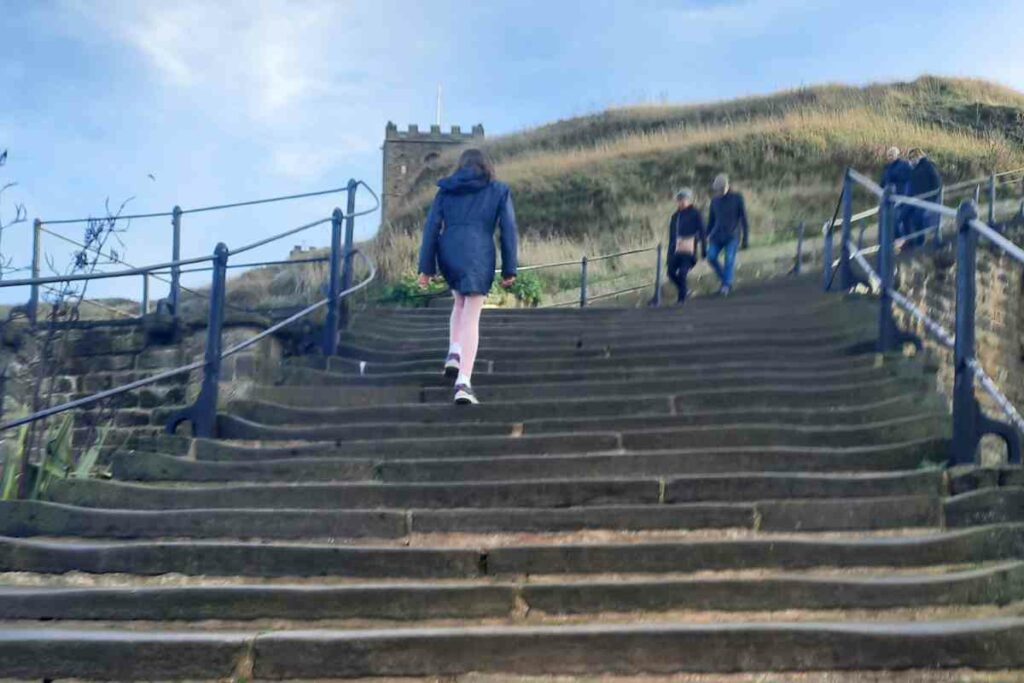
Many believe that the steps serve as some sort of pilgrimage up to the Abbey. They even featured in Stoker’s Dracula novel.
Anyone going up and down the steps will hear others counting as they go.
But many people don’t realize that every tenth step and the final step are marked with a small disc with a Roman numeral, so you don’t have to keep count.
It’s a great thing for children to do though!
Dracula Experience
Given Bram Stoker’s influence, there’s an experience like no other in Whitby – the Dracula Experience.
Not for the faint of heart, this experience is horrifying and ghastly.
The experience gives a unique tour through Dracula’s story and uses animated scenes, special effects, and live actors too.
One thing’s for sure, you should have your wits about you!
Goth Weekend
If you’re visiting Whitby at a particular time of year, you may arrive on one of Whitby’s busiest weekends – Goth Weekend!
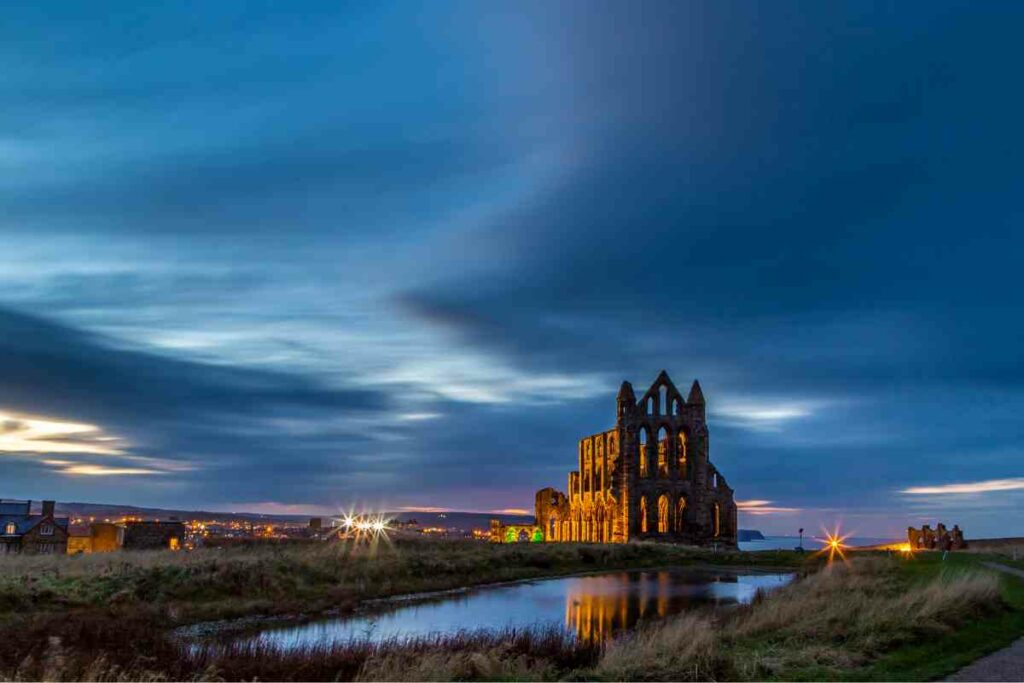
This alternative festival was first started in 1994 and is now one of the world’s biggest goth events, with costumes and fancy dress galore.
It also incorporates the Bizarre Bazaar Alternative Market with over 100 stalls.
Whale Bones
Head up the West Cliff and you’ll come across the Whitby Whalebones.
Stand at the right angle and you can even frame the Abbey through the bone arch, giving a magnificent and unique view of the town.
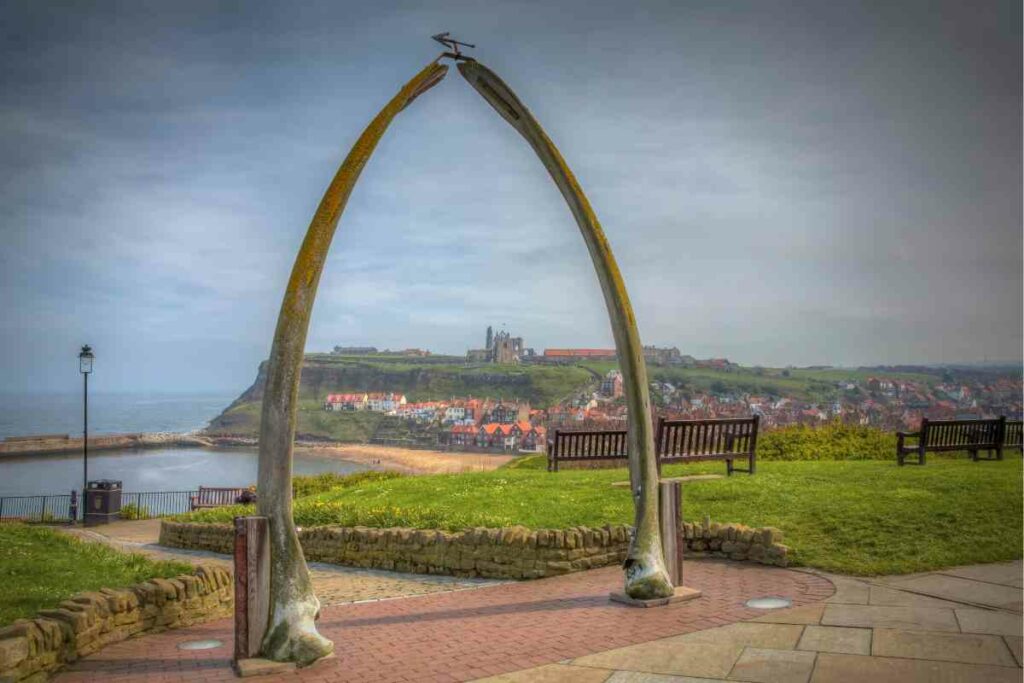
The arch is made of real whale bones and serves as a reminder of Whitby’s rich whaling history.
The first pair of whale bones were erected in 1853.
The most recent replacement bones were donated by Alaska in 2003, where whaling is still legal.
Seaside Fun
Of course, you can’t go to Whitby without noticing that you’re at the seaside.
Whitby boasts a sandy beach and a variety of traditional seaside pursuits that attract the whole family.
Arcades, buckets and spades, candy floss and Whitby Rock – the town has all the seaside fare that you could want.
Whitby Places to Eat
Whitby, being by the sea, is synonymous with fish and chips, the traditional British seaside meal.
In Fact – You’ll be overwhelmed with choice in the town of where to go!
Aside from the traditional, Whitby also has some fantastic alternatives if you’re looking for something to eat and drink.
Monk’s Haven
When I last visited Whitby, I stopped at Monk’s Haven with my two children and young dog.
Helen, Rosie (the dog!) and the team could not have been more welcoming.
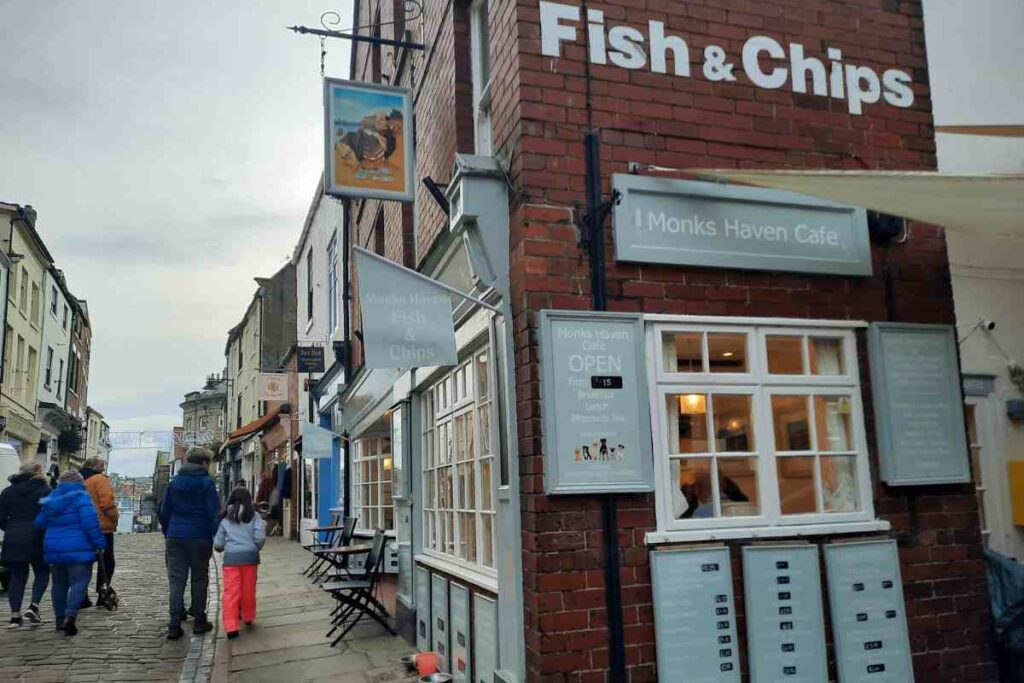
There was a sausage for the puppy, and they even had gluten-free fish and chips, which tasted amazing!
We’ll definitely be back to sample more of the menu options.
The Magpie
The Magpie Café is possibly the most famous fish and chip café in the UK.
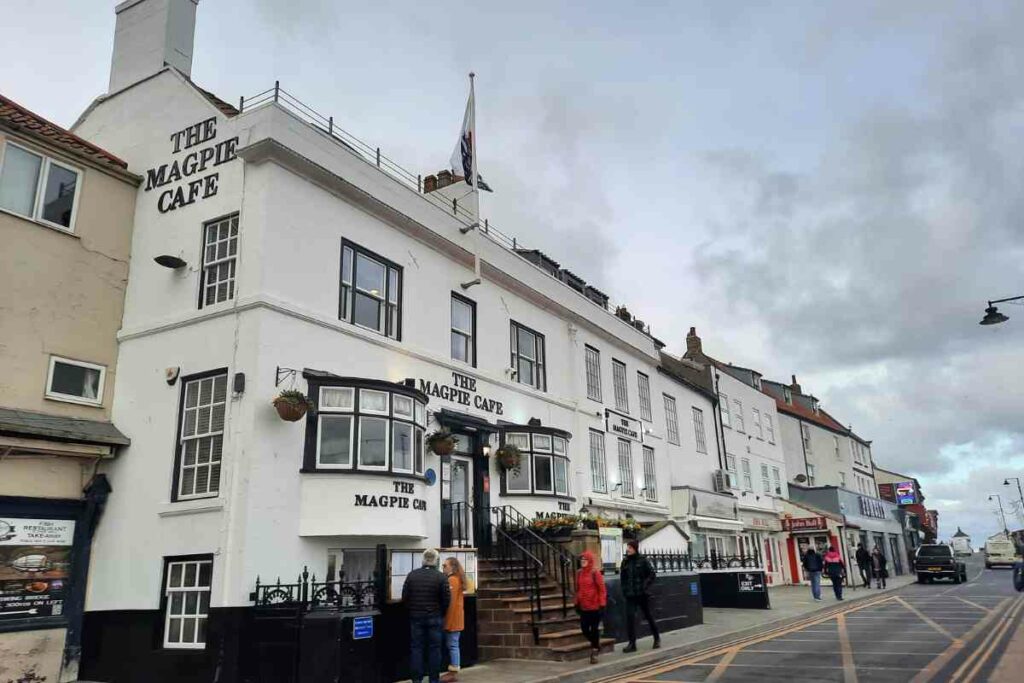
It was built in the mid-18th Century as a merchant’s house and has long been associated with seafaring.
In 1939 – It was first converted into a café and still maintains its traditional feel.
The Rusty Shears
Another excellent spot for a bite to eat or a drink is The Rusty Shears. It is referred to as “Whitby’s Hidden Gem.”
With homemade pastries and cakes, tea, coffee and more than 150 gins – it’s well worth a stop!
Off the beaten track, this little eatery has a courtyard in the summer with its own fig tree, providing fruit for the gin infusions!

The quirky interior is homely and there are bistro evenings where the chefs are free to take a turn at whatever they fancy cooking up!
Final Thoughts on Visit Whitby
Whether you’re a goth looking for fellow goths, a hungry family on the hunt for the best fish and chips around, or a history buff wanting to learn a bit more about Whitby’s past, there truly is something for everyone at Whitby.
Why not come along and see for yourself?

